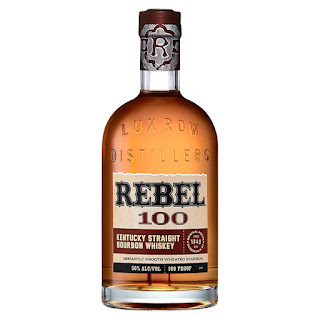So Glenlivet's PR people very kindly got in touch to ask if I'd like to sample the Caribbean Reserve, a No Age Statement expression partly finished in rum barrels and expressly intended for cocktails.
This whisky stands at the intersection of three trends in Scotch Whisky: it's a No Age Statement whisky, it's been (part) matured in something other than bourbon or sherry barrels, and it's meant to be mixed.
Distillers have been under pressure to keep up with demand for over a decade now, as the latest long boom continues. One common response has been to abandon age statements, preferring instead to blend casks to a flavour profile. Modern cask management techniques, as developed for example by Dr Jim Swan, allow distillers to send younger whisky to market - younger, but still properly matured.
The wider boom in brown spirits (how many new craft distillers are there in the USA?) means that there is ever greater competition to secure a supply of good quality casks. This has lead the Scotch industry to fill into ever more unlikely barrel types. These days it seems that even tequila casks fit the SWA's definition of "traditional". Rum, by comparison, is positively mainstream.
And the third trend is that of using Scotch in mixed drinks. Now, I'm a great enthusiast of Scotch cocktails (here's me, for example, on Roy Duff's most excellent YouTube channel Aqvavitae doing all sorts of tasty things. Or at least, mostly tasty.) I'm not so sure that this trend is a strong or as widespread as the other two. It feels a bit like the annual declaration somewhere in the drinks trade press that This Is The Year Of Sherry. But nevertheless.
So this No Age Statement Glenlivet, partly finished in rum casks, and explicitly presented as a cocktail ingredient, definitely sits at the crossroads of these three trends.
Along with the bottle, Glenlivet sent me a list of suggested serves. I tried two of these, although of course I also sipped the malt neat - this blog is Smell The Malt, after all. Here's a quick rundown of the drinks and how they tasted.
The dram itself
It's immediately Glenlivet, with the signature green pear notes. It's sweet - sweeter than the flagship Glenlivet Reserve? I think so (but didn't have any to hand to make the comparison). But where's the rum?
The Caribbean Cooler
(50ml Glenlivet Caribbean Reserve, 25ml Pineapple juice, 2 dashes Angostura bitters. Build in an ice filled glass and top with peach flavoured sparkling water)
This was blooming delicious. As you can see from the picture it was a hot, hot day, and this went down a real treat.
Coco Breeze
(2 parts Glenlivet, 1.5 parts coconut water, 2 lime wedges, 0.5 parts simple syrup, 8 mint leaves. Build in a tin shaker. Muddle & then shake. Pour into an ice filled hiball and top with coconut water. Garnish with lime and mint)
For me the whisky got lost in this one. I enjoyed the drink, but it was a bit out of focus.
Conclusion
This is a very easy going dram. A good party whisky. A drinker not a thinker. And I enjoyed both of the suggested serves that I tried. But, I do think, if you're going to market a whisky as a Caribbean Reserve, you should probably use more, and more active, rum casks. I've just finished judging the 2022 World Cider Awards and one of the conversations we had over and over again in the Flavoured category was exactly about this. If it says Blueberry on the label, the consumer rightly expects to find blueberry flavour. If it says "finished in rum barrels", it ought to taste like it.
Thank you to Glenlivet for providing the sample bottle. If you'd like to read more about making cocktails with Glenlivet, here you go.








